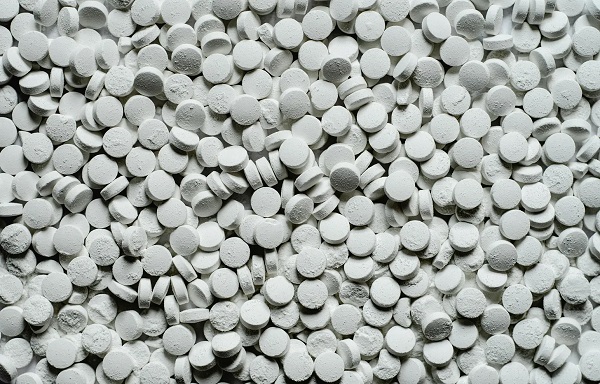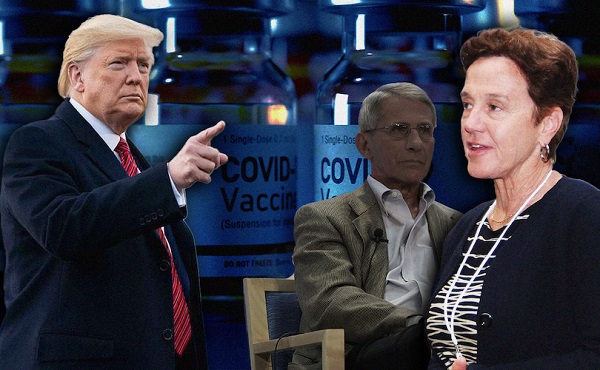Addictions
Fuelling addiction – The “safe supply” disaster

By Denise Denning
There is a growing schism in the Canadian addiction treatment community regarding safer supply.
[This article was originally published by the MacDonald Laurier Institute and has been syndicated with their permission]
As the death toll from the ongoing opioid poisoning crisis in Canada continues to rise, jurisdictions across the country struggle to find solutions. Safe consumption sites, where people can use drugs in a supervised setting that provides clean syringes and overdose kits, have opened across Canada. Addiction medicine clinics that provide treatments for drug use have proliferated nation-wide. Controversially, the Trudeau government has funded so-called “safer opioid supply” programs that provide powerful pharmaceutical opioids to people who use drugs with the presumption that they will use these in place of street drugs of unknown potency containing numerous and poorly understood toxic adulterants. But even though they lack those toxic adulterants, safer supply drugs are not safe. By virtue of the pharmacology inherent to all opioids, safer supply drugs may be increasing harm.
Unlike safe consumption sites, where people bring their own drugs and use them in a supervised environment, safer supply programs provide people who use opioids with up to 30 tablets per day of the powerful synthetic opioid hydromorphone to take away with them and use elsewhere without any supervision or proof that they are using the drugs themselves. “Safer supply services provide an alternative to the toxic illegal drug supply as a way to help prevent overdoses and can connect people to other health and social services,” touts Health Canada’s safer supply web page. Safer supply programs “build on existing approaches that provide medications to treat opioid use disorder” and these programs are “more flexible and do not necessarily focus on stopping drug use.”
Health Canada’s quietly optimistic tone is echoed and magnified by advocates and activists across the country, who insist that safer supply is “the most important intervention” to save the lives of people who use drugs and cite data suggesting that safer supply is a powerful harm reduction tool for helping people avoid the risks of exposure to sketchy street drugs. And the benefits of safer supply, proponents assert, go beyond saving people from overdose. Safer supply also protects people from the stigma associated with illicit drug use. “Overdose prevention measures that go beyond individual behaviour changes, including providing a safer supply of drugs and eliminating stigma, are paramount to mitigate harms,” asserts one review. “Increasing respectful treatment of people who use substances, and reducing stigma and trauma improves the health of communities,” a review of a drug checking service declares.
“Sociopolitical factors such as prohibition, stigma, and criminalization of people who use drugs have fuelled the current overdose crisis and toxic unregulated drug supply and limited the establishment and scale up of services for people who use drugs,” proclaims another paper promoting the benefits of safer supply.
Certainly, all of us working in addiction treatment agree that putting people in jail does not solve their drug use problems, and everyone should be able to access health care without concerns of being stigmatized. But suggesting that these factors have fuelled the current crisis is an assertion that not only lacks proof but also ignores the material reality of the pharmacology of these drugs and their impact on the human central nervous system.
There is a growing schism in the Canadian addiction treatment community regarding safer supply. Its opponents, who include prominent addiction medicine physicians across Canada, insist that none of the studies of safer supply consider the number of people in safer supply programs who sell or trade their safer supply drugs to buy fentanyl. They point out that the studies finding safer supply beneficial are too narrow in their scope because they only examine the benefits to the patients receiving the safer supply and do not consider diversion and its potential for harm by putting these drugs in the hands of people other than street drug users, such as youth, or people who have stopped using drugs.
In an article published by the Globe and Mail, addiction medicine physician and writer Dr. Vincent Lam wrote about how some of his patients are struggling with their addictions because the hydromorphone has become so cheap and readily available. “Patients of mine who were free of illicit opioids for years now struggle with hydromorphone, which they are buying from those to whom it is prescribed. One told me they prefer to sleep outside rather than in shelters, because they cannot avoid hydromorphone in the shelters. One who has never tried fentanyl – which hydromorphone is meant to protect them from – is injecting high doses of hydromorphone daily, struggling to get off, while their tolerance rapidly increases.”
Another critic of safer supply, Dr. Lori Regenstreif, has seen patients severely harmed when they crush and inject the tablets. “I’ve seen people become quadriplegic and paraplegic because the infection invaded their spinal cord and damaged their nervous system,” she said. And she called the studies in favour of safer supply “customer satisfaction surveys” that do not meet scientific standards of properly conducted research. For instance, a study that has been cited as powerful evidence for the effectiveness of safer supply did not control for patients using methadone or Suboxone, two well-established and effective treatments for opioid use disorder. At baseline, the control group and the study group were using these treatments at roughly the same rates. But the authors didn’t provide the number of participants using these treatments at the study’s end. So, the purported benefits of safer supply could have been from established treatments rather than safer supply.
A word about terminology: referring to these programs as “safer supply” is problematic because it implies that these programs are safe. Dr. Lori Regenstreif suggests the term “take home tablets” as a more neutral alternative that also describes exactly how these programs work. For the rest of this article, the term “take home tablets” or “prescribed opioids” will be used, only retaining “safer supply” in the previous paragraphs for the sake of clarity.
A review of 19 studies advocating for take home tablet programs found “no evidence demonstrating benefits.” For instance, only one of the studies recommended interventions that have been proven to address risk factors for addiction, even though all the studies found high rates of homelessness, unemployment, food insecurity, and other markers for poverty. And none of the studies investigated the implications of diversion, though there is increasing evidence that diversion is widespread. And a more recent review of these programs found that the “Safer Opioid Supply Policy” in British Columbia was associated with “a significant increase in opioid-related poisoning hospitalizations.”
The rhetoric is becoming increasingly heated and politicized. Supporters of take home tablet programs accuse its detractors of denying a potentially life-saving intervention to a vulnerable population of marginalized people. Critics, such as those discussed above, point to the paucity of good quality evidence and the plethora of potential harms from diversion. But what the discussion has been lacking is a consideration of how the pharmacology of these drugs should influence policies regarding the care provided to these marginalized and vulnerable people. Surely the way these drugs act in the human body should provide the underpinning for any evidence-based addiction management program.
Proponents of take home tablet programs will say, correctly, that opioids have been used for at least 3,000 years in the form of opium from Papaver somniferum, the poppy. Modern opioid pharmacology emerged out of the synthesis of morphine from opium in 1806. All opioids are derived from four compounds, including morphine, that are found in opium. Heroin is nothing more than morphine with a tweak to its molecule rendering it more fat soluble. Compared with water soluble substances, products that are fat soluble are better able to penetrate the blood brain barrier and enter the central nervous system. When heroin is injected, users experience a euphoric rush that they wouldn’t experience as intensely from injecting morphine, even though it’s almost the same drug as morphine, and within half an hour after injection, heroin is converted into morphine.
Stimulation of the opioid receptors by morphine and all its myriad opioid kin results in the classic effects of opioids such as pain relief, euphoria, sedation, respiratory depression, reduced heart rate, and a slowing of the gastrointestinal tract resulting in constipation. As the dosage is increased, respiration slows further, and patients sometimes experience nausea and vomiting. Depending on the dose taken and the person’s tolerance, increasing sedation may progress to coma and respiratory arrest. Opioids kill people by sedating them so deeply they stop breathing.
Subscribe for free to get Break The Needle’s latest news and analysis – or donate to our investigative journalism fund.
With chronic use, opioids cause adaptations in the body resulting in tolerance such that these habitual users require higher doses to achieve the same degree of euphoria. The flip side of tolerance is the withdrawal that happens when the person stops using and their autonomic nervous system goes into overdrive. The greater the tolerance, the worse the withdrawal, characterized by nausea and vomiting, diarrhea, muscle cramps, bone and joint aches, tremors, anxiety, goosebumps, sweating, restlessness. Opioid withdrawal isn’t generally fatal but may be if patients develop heart arrhythmias from electrolyte loss and autonomic overstimulation.
Tolerance and withdrawal are the evil twins of addiction. Addictive drugs have a rapid onset of action, produce a euphoriant effect, and have a short duration of action. The relative addictive potential of these drugs may be predicted by how much they adhere to these intersecting characteristics. For instance, morphine is less addictive than oxycodone, the active ingredient in OxyContin. Both morphine and oxycodone are rapid acting, produce euphoria, and have a short duration of action. Both may induce tolerance and withdrawal. But morphine gets metabolized to another substance that is more potent and sustains the opioid effect, and it accumulates if the person uses it every day. Morphine in effect has a longer duration of action compared with oxycodone, which has no active metabolites. A person who takes oxycodone will experience rapidly dropping blood levels as the drug is metabolized and excreted, leaving the user in withdrawal and craving more.
The manufacturers of the oxycodone product OxyContin infamously made a case for their product being less addictive because they formulated it into a long-acting dosage form that released the drug gradually over an 8-to-12-hour period. The story of OxyContin has been exhaustively covered elsewhere, and I won’t rehash it here. In brief: people quickly discovered that OxyContin’s sustained-release matrix could be easily defeated by chewing or crushing the tablets, thus releasing the drug all at once, and as knowledge of this hack spread, a growing public health crisis ensued, resulting in the destruction of communities, massive numbers of arrests as people seeking pain relief became criminalized by their addiction, and thousands of deaths across Canada and the United States.
The hydromorphone given to fentanyl users in safer supply programs is about five times stronger than morphine and four times stronger than oxycodone. It exerts its maximal effect in one to two hours and lasts for around three to four hours. In terms of relative addictiveness by virtue of its pharmacology, hydromorphone in theory would sit between heroin and fentanyl, though in a subset of a study called NAOMI, where people who use heroin were provided hydromorphone in place of heroin without their knowledge, none of the 25 participants could tell the difference.
Then there’s fentanyl. When injected, the onset of action for morphine and oxycodone is about 10 minutes. Injected fentanyl works almost immediately, and it is fat soluble, meaning that it can penetrate the blood-brain barrier and get into the brain with ease. The duration of action for morphine and oxycodone is similar, about 4 to 6 hours. Fentanyl’s duration of action is 30 to 60 minutes, maybe stretching to 2 hours if it’s injected intramuscularly rather than intravenously.
Fentanyl has a faster onset of action compared with other opioids, it produces a powerful euphoria by virtue of being about fifty times stronger than morphine, and its effects last about half as long at most. In other words, the public health disaster that has resulted from the widespread proliferation of fentanyl in the street drug supply could have been predicted from its pharmacology. Recall how people who use heroin could not distinguish it from hydromorphone. In contrast, fentanyl users prefer fentanyl because hydromorphone is not strong enough. There is increasing evidence, albeit anecdotal, that people who use fentanyl will sell their hydromorphone to other users reluctant to try the illicit drug supply. In turn, the pharmacology of these drugs predicts that those hydromorphone users may eventually transition to using fentanyl in search of a better high as their drug use continues and their opioid tolerance deepens.
Data published by Health Canada provides corroboration for this hypothesis. In 2016, fentanyl was implicated in 52 per cent of opioid toxicity deaths in Canada, while non-fentanyl opioids were present in 59 per cent of cases. By 2018, fentanyl and its analogues were present in 80 per cent of opioid toxicity deaths while non-fentanyl opioids had fallen to 46 per cent. As of 2024, fentanyl and its analogues were present in almost all opioid toxicity deaths while the prevalence of non-fentanyl opioids had fallen to 26 per cent.
If hydromorphone isn’t strong enough for fentanyl users, why not give them pharmaceutical fentanyl instead? But there are already stronger analogues of fentanyl, such as carfentanil, that are increasingly found when samples of illicit drugs are analyzed. A recent study discovered that 20 per cent of opioid-containing samples analyzed in Alberta in 2022 contained carfentanil. If drug dealers started losing customers to take home tablet programs (they currently are not), a potential arms race, where dealers increase the potency of their drugs to make them more attractive than legally available options, may result in an illicit drug supply of ever-increasing lethality. And what of the people who use these ultra-strong opioids? Obviously, more people will die. The potency of fentanyl means that people who use it find stopping using profoundly challenging. People working in addiction treatment struggle to help patients who are experiencing the worst withdrawal any of us have ever seen. If ultra-strong opioids dwarfing fentanyl in potency become predominant in the illicit drug supply, the people who survive using these drugs may be predicted to experience a withdrawal syndrome that approaches the limits of human misery.
And therein lies the harm of these drugs. Whether or not they are criminalized; whether people can freely access them, opioids are potent drugs with many significant side effects and long-term negative effects that worsen over time. People who use legitimately acquired opioids for therapeutic reasons struggle with chronic constipation, cognitive impairment, an increased risk of falls, paradoxical increased sensitivity to pain known as “opioid-induced hyperalgia,” and an ongoing risk of experiencing withdrawal if they are unable to access their medications. All drugs should be used in the context of balancing risks versus benefits, where the harms caused by side effects are balanced against the therapeutic benefits. Like pharmacologists David Juurlink and Matthew Herder said, “Put simply, high-dose opioids constitute a self-perpetuating therapy, with patients left vulnerable by the need for ongoing treatment to avoid withdrawal, itself a pernicious, drug-related harm.”
Comprehensive treatment aimed at recovery is the path forward
These problems are complex and multifaceted, involving intersecting domains of public health, law enforcement, and health care. My main objection to take home tablet programs, apart from the public health disaster to which these programs contribute, is the abandonment of the principle of eventual sobriety for people who use drugs. By giving people the drugs they want, we are giving up on the possibility of a better quality of life for a marginalized population of people, many of whom are self-medicating to deal with trauma that otherwise has been left unaddressed. Addiction is a chronic and long-standing condition marked by relapses. The main risk factors for addiction are mental illness and trauma. In particular, childhood abuse puts people at a magnified risk of having a substance use disorder as an adult. Women who engage in prostitution and use illicit drugs are more likely to have been sexually abused before the age of 15. These are traumatized people who are self-medicating to deal with psychological pain.
The key is to provide comprehensive treatment that aims at full recovery, but in a gradual way that makes use of gradated treatment pathways. This means that a prescribed supply of high potency opioids may be a useful tool for some people in their complex and long-standing journey to sobriety, if used as an adjunct to other treatments and supports. To minimize the risk of diversion, prescribers may use treatment agreements, documents that patients sign where they agree to take their medication as prescribed and not divert it, and submit urine drug screens if requested. But to offer take home tablets in the absence of evidence-based addiction treatment modalities and other psychosocial supports only serves to abandon people to ongoing severe intractable high potency opioid use.
What works for people caught in a web of seemingly intractable severe addiction? The two main treatment paradigms in addiction medicine have traditionally been abstinence-based programs such as the 12-step programs popularized by Alcoholics Anonymous, and harm reduction programs such as methadone maintenance treatment. Abstinence-based programs, as the name suggests, are defined by the all-or-nothing goal of total sobriety. These programs are attractive because of their “Kids, don’t do drugs” simplicity. But this simplicity is deceptive because addiction is complex, and these programs have been found not to work for most people. For instance, abstinence-based programs will frequently kick people out of treatment for using drugs, thus punishing them for the problems that motivated them to seek treatment in the first place. The focus on abstinence means that they minimize the reality that the journey to sobriety is punctuated by relapses. Current Canadian guidelines for the treatment of opioid use disorder warn against simple cessation of drug use without follow up because of the significant risk of overdose. When people stop using opioids, their tolerance wanes. If they relapse and use their former dose, they may suffer a fatal overdose.
The harm reduction treatment paradigm emerged out of the limitations of strict abstinence-based programs that eject patients who lapse, and that don’t offer gradated treatment pathways to gradually get patients to full recovery. Harm reduction accepts drug use with the overall goal, as the name suggests, of reducing the harms associated with using illicit drugs and retaining contact with those patients unwilling or unable to stop all drug use.
Harm reduction in the form of medication assisted treatments such as methadone, Suboxone and Sublocade has been the gold standard of opioid addiction treatment, effective in not only reducing illicit opioid use but also proven to reduce overdose risk, criminal behaviour, risky sexual behaviour, and the transmission of blood-borne infections propagated by needle sharing. Medication assisted treatments are also found improve people’s lives in the domains of social determinants of health, such as going back to school, finding employment, and regaining custody of children. And these programs have been proven to save lives, reducing mortality from overdose, suicide, alcohol, and even from causes one would not intuitively associate with drug use, such as cancer and cardiovascular disease. Medication assisted treatments are a resoundingly science-based harm reduction modality and should be the treatments of first choice offered to this vulnerable population.
But harm reduction is just one of the four pillars of addiction recovery. Harm reduction by itself saves lives, but it doesn’t help people move forwards towards sobriety. The other three pillars of addiction recovery are prevention, treatment, and enforcement. Prevention addresses the risk factors for addiction and involves treatment for mental illnesses and proper, more comprehensive pain management treatment plans that go beyond just prescribing painkillers. Enforcement means preventing these drugs or their precursors from entering Canada or prosecuting those who sell illicit drugs. And treatment for people who use drugs must involve not only just harm reduction, but also a comprehensive range of services such as housing supports, counselling and other psychosocial services, and employment support.
Take home tablet programs are based on two presumptions: firstly, that people receiving these drugs will use them in place of street drugs and not just sell them to buy street drugs, as they do; and secondly, that opioids are safe to take as long as the dose is not excessive. Given that these two presumptions are false, the only conclusion we can reach is that take home tablet programs do not reduce harm, but increase it. I concede that providing people with legally sourced opioids reduces their risk of criminal prosecution, and there is a reduction in stigma when you give people what they want without judgment, but this is a false dichotomy – you can achieve reductions in prosecution with better treatment, rather than supporting objectively harmful behaviour in the name of destigmatization. At the end of the day, stigma doesn’t kill people – bad drugs do, and providing people who use drugs with the wraparound supportive services that they need and have been shown to work is more complex, and probably more expensive. But complex problems are rarely solved by simple solutions.
Denise Denning is a correctional pharmacist with background in addiction treatment. After graduating from the University of Toronto Faculty of Pharmacy, Denning completed a specialized residency in the treatment of drug and alcohol use at the Addiction Research Foundation in Toronto (now CAMH). She worked as the pharmacist at the Toronto Jail for 17 years, and the pharmacy manager at the Toronto South Detention Centre for 8 years, where she provided clinical advice on the management of patients with opioid use disorder and supervised the preparation of methadone doses. She also worked part time for four years at a pharmacy providing mostly methadone in downtown Toronto. Currently, she is the provincial pharmacy manager for the Ontario Ministry of the Solicitor General, where she provides guidance on medication related policies and procedures for that province’s correctional facilities.
Subscribe to Break The Needle. Our content is always free – but if you want to help us commission more high-quality journalism, consider getting a voluntary paid subscription.
Addictions
There’s No Such Thing as a “Safer Supply” of Drugs

By Adam Zivo
Sweden, the U.K., and Canada all experimented with providing opioids to addicts. The results were disastrous.
[This article was originally published in City Journal, a public policy magazine and website published by the Manhattan Institute for Policy Research. We encourage our readers to subscribe to them for high-quality analysis on urban issues]
Last August, Denver’s city council passed a proclamation endorsing radical “harm reduction” strategies to address the drug crisis. Among these was “safer supply,” the idea that the government should give drug users their drug of choice, for free. Safer supply is a popular idea among drug-reform activists. But other countries have already tested this experiment and seen disastrous results, including more addiction, crime, and overdose deaths. It would be foolish to follow their example.
The safer-supply movement maintains that drug-related overdoses, infections, and deaths are driven by the unpredictability of the black market, where drugs are inconsistently dosed and often adulterated with other toxic substances. With ultra-potent opioids like fentanyl, even minor dosing errors can prove fatal. Drug contaminants, which dealers use to provide a stronger high at a lower cost, can be just as deadly and potentially disfiguring.
Because of this, harm-reduction activists sometimes argue that governments should provide a free supply of unadulterated, “safe” drugs to get users to abandon the dangerous street supply. Or they say that such drugs should be sold in a controlled manner, like alcohol or cannabis—an endorsement of partial or total drug legalization.
But “safe” is a relative term: the drugs championed by these activists include pharmaceutical-grade fentanyl, hydromorphone (an opioid as potent as heroin), and prescription meth. Though less risky than their illicit alternatives, these drugs are still profoundly dangerous.
The theory behind safer supply is not entirely unreasonable, but in every country that has tried it, implementation has led to increased suffering and addiction. In Europe, only Sweden and the U.K. have tested safer supply, both in the 1960s. The Swedish model gave more than 100 addicts nearly unlimited access through their doctors to prescriptions for morphine and amphetamines, with no expectations of supervised consumption. Recipients mostly sold their free drugs on the black market, often through a network of “satellite patients” (addicts who purchased prescribed drugs). This led to an explosion of addiction and public disorder.
Most doctors quickly abandoned the experiment, and it was shut down after just two years and several high-profile overdose deaths, including that of a 17-year-old girl. Media coverage portrayed safer supply as a generational medical scandal and noted that the British, after experiencing similar problems, also abandoned their experiment.
While the U.S. has never formally adopted a safer-supply policy, it experienced something functionally similar during the OxyContin crisis of the 2000s. At the time, access to the powerful opioid was virtually unrestricted in many parts of North America. Addicts turned to pharmacies for an easy fix and often sold or traded their extra pills for a quick buck. Unscrupulous “pill mills” handed out prescriptions like candy, flooding communities with OxyContin and similar narcotics. The result was a devastating opioid epidemic—one that rages to this day, at a cumulative cost of hundreds of thousands of American lives. Canada was similarly affected.
The OxyContin crisis explains why many experienced addiction experts were aghast when Canada greatly expanded access to safer supply in 2020, following a four-year pilot project. They worried that the mistakes of the recent past were being made all over again, and that the recently vanquished pill mills had returned under the cloak of “harm reduction.”
Subscribe for free to get BTN’s latest news and analysis – or donate to our investigative journalism fund.
Most Canadian safer-supply prescribers dispense large quantities of hydromorphone with little to no supervised consumption. Patients can receive up to 40 eight-milligram pills per day—despite the fact that just two or three are enough to cause an overdose in someone without opioid tolerance. Some prescribers also provide supplementary fentanyl, oxycodone, or stimulants.
Unfortunately, many safer-supply patients sell or trade a significant portion of these drugs—primarily hydromorphone—in order to purchase more potent illicit substances, such as street fentanyl.
The problems with safer supply entered Canada’s consciousness in mid-2023, through an investigative report I wrote for the National Post. I interviewed 14 addiction physicians from across the country, who testified that safer-supply diversion is ubiquitous; that the street price of hydromorphone collapsed by up to 95 percent in communities where safer supply is available; that youth are consuming and becoming addicted to diverted safer-supply drugs; and that organized crime traffics these drugs.
Facing pushback, I interviewed former drug users, who estimated that roughly 80 percent of the safer-supply drugs flowing through their social circles was getting diverted. I documented dozens of examples of safer-supply trafficking online, representing tens of thousands of pills. I spoke with youth who had developed addictions from diverted safer supply and adults who had purchased thousands of such pills.
After months of public queries, the police department of London, Ontario—where safer supply was first piloted—revealed last summer that annual hydromorphone seizures rose over 3,000 percent between 2019 and 2023. The department later held a press conference warning that gangs clearly traffic safer supply. The police departments of two nearby midsize cities also saw their post-2019 hydromorphone seizures increase more than 1,000 percent.
The Canadian government quietly dropped its support for safer supply last year, cutting funding for many of its pilot programs. The province of British Columbia (the nexus of the harm-reduction movement) finally pulled back support last month, after a leaked presentation confirmed that safer-supply drugs are getting sold internationally and that the government is investigating 60 pharmacies for paying kickbacks to safer-supply patients. For now, all safer-supply drugs dispensed within the province must be consumed under supervision.
Harm-reduction activists have insisted that no hard evidence exists of widespread diversion of safer-supply drugs, but this is only because they refuse to study the issue. Most “studies” supporting safer supply are produced by ideologically driven activist-scholars, who tend to interview a small number of program enrollees. These activists also reject attempts to track diversion as “stigmatizing.”
The experiences of Sweden, the United Kingdom, and Canada offer a clear warning: safer supply is a reliably harmful policy. The outcomes speak for themselves—rising addiction, diversion, and little evidence of long-term benefit.
As the debate unfolds in the United States, policymakers would do well to learn from these failures. Americans should not be made to endure the consequences of a policy already discredited abroad simply because progressive leaders choose to ignore the record. The question now is whether we will repeat others’ mistakes—or chart a more responsible course.
Our content is always free –
but if you want to help us commission more high-quality journalism,
consider getting a voluntary paid subscription.
Addictions
Should fentanyl dealers face manslaughter charges for fatal overdoses?

Tyler Ginn prior to his death from a fentanyl overdose in 2021. [Photo credit: Gayle Fowlie]
By Alexandra Keeler
Police are charging more drug dealers with manslaughter in fentanyl overdose deaths. But the shift is not satisfying everyone
Four years ago, Tyler Ginn died of a fentanyl overdose at the age of 18. Tyler’s father found his son unresponsive in the bedroom of their Brooklin, Ont., home.
For Tyler’s mother, Gayle Fowlie, the pain of his loss remains raw.
“He was my kid that rode his bike to the store to buy me a chocolate bar on my birthday, you know?” she told Canadian Affairs in an interview.
Police charged Jacob Norn, the drug dealer who sold Tyler his final, fatal dose, with manslaughter. More than three years after Tyler’s death, Norn was convicted and sentenced to six years in prison.
“I don’t think you can grasp how difficult going through a trial is,” Fowlie said. “On TV, it’s a less than an hour process. But the pain of it, and going over every detail and then going over every detail again … it provides details you wish you didn’t know.”
But Fowlie is glad Norn was convicted. If anything, she would have liked him to serve a longer sentence. Lawyers have told her Norn is likely to serve only two to four years of his sentence in prison.
“My son’s never coming back [and] his whole family has a life sentence of missing him the rest of our lives,” she said. “So do I think four years is fair? No.”
Norn’s case reflects a growing trend of drug dealers being charged with manslaughter when their drug sales lead to fatal overdoses.
But this shift has not satisfied everyone. Some would like to see drug dealers face harsher or different penalties.
“If we say that it was 50 per cent Tyler’s fault for buying it and 50 per cent Jacob’s fault for selling it … then I think he should have a half-a-life sentence,” said Fowlie.
Others say the legal system’s focus on prosecuting low-level drug dealers misses the broader issues at play.
“[Police] decided, in the Jacob Norn case, they were going to go one stage back,” said Peter Thorning, who was Norn’s defence lawyer.
“What about the person who gave Jacob that substance? What about the person who supplied the substance to [that person]? There was no investigation into where it came from and who was ultimately responsible for the death of that young man.”
Manslaughter charge
At least 50,000 Canadians have died from drug overdoses since 2016. Last year, an average of 21 individuals died each day, with fentanyl accounting for nearly 80 per cent of those deaths.
Fentanyl, a synthetic opioid, is up to 50 times stronger than heroin and 100 times stronger than morphine. A dose as small as a few grains of salt can be lethal.
Given its potency, police and prosecutors have increasingly turned to manslaughter charges when a dealer’s product results in a fatal overdose.
A recent study in the Canadian Journal of Law and Society found that the number of manslaughter charges laid for drug-related deaths in Canada surged from three cases in 2016 to 135 in 2021.
Individuals can be convicted of manslaughter for committing unlawful, reckless or negligent acts that result in death but where there was no intention to kill. Sentences can range from probation (in rare cases) to life.
Murder charges, by contrast, require an intent to kill or cause fatal harm. Drug dealers typically face manslaughter charges in overdose cases, as their intent is to distribute drugs, not to kill those who purchase them.
Joanne Bortoluss, a spokesperson for the Durham Regional Police, which charged Norn, said that each of their investigations follows the same fundamental process.
“Investigators consider the strength of the evidence, the dealer’s level of involvement, and applicable laws when determining whether to pursue charges like manslaughter,” she said.
The Canadian Journal of Law and Society study also found that prosecutions often target low-level dealers, many of whom are drug users themselves and have personal connections to the deceased.
Norn’s case fits this pattern. He struggled with substance abuse, including addiction to fentanyl, Xanax and Percocet. Tyler and Norn were friends, the judge said in the court ruling, although Fowlie disputes this claim.
“[Those words] are repulsive to me,” she said.
The Crown argued Norn demonstrated “a high degree of moral blameworthiness” by warning Ginn of the fentanyl’s potency while still selling it to him. In a call to Ginn, he warned him “not to do a lot of the stuff” because he “didn’t want to be responsible for anything that happened.”
Fowlie’s outrage over Norn’s lenient sentencing is compounded by the fact that Norn was found trafficking fentanyl again after her son’s death.
“So we’ve killed somebody, and we’re still … trafficking? We’re not worried who else we kill?” Fowlie said.

Trafficking
Some legal sources noted that manslaughter charges do not necessarily lead to harsh sentences or deterrence.
“If you look at how diverse and … lenient some sentences are for manslaughter, I don’t think it really pushes things in the direction that [victims’ families] want,” said Kevin Westell, a Vancouver-based trial lawyer and former chair of the Canadian Bar Association.
Westell noted that the term “manslaughter” is misleading. “Manslaughter is a brutal-sounding title, but it encapsulates a very broad span of criminal offences,” he said.
In Westell’s view, consistently charging dealers with drug trafficking could be more effective for deterring the practice.
“What really matters is how long the sentence is, and you’re better off saying, ‘We know fentanyl is dangerous, so we’re setting the sentence quite high,’ rather than making it harder to prove with a manslaughter charge,” he said.
Trafficking is a distinct charge from manslaughter that involves the distribution, sale or delivery of illicit drugs. The sentencing range for fentanyl trafficking is eight to 15 years, Kwame Bonsu, a media relations representative for the Department of Justice, told Canadian Affairs.
“Courts must impose sentences that are proportionate to the gravity of the offence and the degree of responsibility of the offender,” Bonsu said, referencing a 2021 Supreme Court of Canada decision. Bonsu noted that aggravating factors such as lack of remorse or trafficking large quantities can lead to harsher sentences.
‘Head of the snake’
Some legal experts noted the justice system often fails to target those higher up in the drug supply chain.
“We don’t know how many hands that drug goes through,” said Thorning, the defence lawyer.
“Are the police going to prosecute every single person who provides fentanyl to another person? Jacob [Norn] was himself an addict trafficker — what about the person who supplied the substance to him?”
Thorning also questioned whether government agencies bear some responsibility. “Is some government agency’s failure to investigate how that drug came into the country partly responsible for the young man’s death?”
Westell, who has served as both a Crown prosecutor and criminal defence lawyer, acknowledged the difficulty of targeting higher-level traffickers.
“Cutting off the head of the snake does not align very well with the limitations of the international borders,” he said.
“Yes, there are transnational justice measures, but a lot gets lost, and as soon as you cross an international border of any kind, it becomes incredibly difficult to follow the chain in a linear way.”
Bortoluss, of the Durham police, said even prosecuting what appear to be obvious fentanyl-related deaths — such as Tyler Ginn’s — can be challenging. Witnesses can be reluctant to cooperate, fearing legal consequences. It can also be difficult to identify the source of drugs, as “transactions often involve multiple intermediaries and anonymous online sales.”
Another challenge in deterring fentanyl trafficking is the strong financial incentives of the trade.
“Even if [Norn] serves two to four years for killing somebody, but he could make a hundred thousand off of selling drugs, is it worth it?” Fowlie said.
Thorning agreed that the profit incentive can be incredibly powerful, outweighing the risk of a potential sentence.
“The more risky you make the behaviour, the greater the profit for a person who’s willing to break our laws, and the profit is the thing that generates the conduct,” he said.
A blunt instrument
Legal experts also noted the criminal justice system alone cannot solve the fentanyl crisis.
“Most people who have [lost] a loved one [to drug overdose] want to see a direct consequence to the person that’s responsible,” said Westell. “But I think they would also like to see something on a more macro level that helps eliminate the problem more holistically, and that can’t be [achieved through] crime and punishment alone.”
Thorning agrees.
“These are mental health .. [and] medical issues,” he said. “Criminal law is a blunt instrument [that is] not going to deal with these things effectively.”
Even Fowlie sees the problem as bigger than sentencing. Her son struggled with the stigma associated with therapy and medication, which made it difficult for him to seek help.
“We need to normalize seeing a therapist, like we normalize getting your eyes checked every year,” she said.
“Pot isn’t the gateway drug, trauma is a gateway drug.”
This article was produced through the Breaking Needles Fellowship Program, which provided a grant to Canadian Affairs, a digital media outlet, to fund journalism exploring addiction and crime in Canada. Articles produced through the Fellowship are co-published by Break The Needle and Canadian Affairs.
Subscribe to Break The Needle – or donate to our investigative journalism fund.
-

 2025 Federal Election9 hours ago
2025 Federal Election9 hours agoPoilievre To Create ‘Canada First’ National Energy Corridor
-

 Automotive2 days ago
Automotive2 days agoAuto giant shuts down foreign plants as Trump moves to protect U.S. industry
-

 Energy1 day ago
Energy1 day agoTrump Takes More Action To Get Government Out Of LNG’s Way
-

 2025 Federal Election23 hours ago
2025 Federal Election23 hours agoMainstream Media Election Coverage: If the Election Was a NHL Game, the Ice Would be Constantly Tilted Up and to the Left
-

 Health1 day ago
Health1 day agoSelective reporting on measles outbreaks is a globalist smear campaign against Trump administration.
-

 COVID-192 days ago
COVID-192 days agoTrump’s new NIH head fires top Fauci allies and COVID shot promoters, including Fauci’s wife
-

 2025 Federal Election2 days ago
2025 Federal Election2 days agoPoilievre promises to drop ‘radical political ideologies’ in universities
-

 Business2 days ago
Business2 days ago‘Time To Make The Patient Better’: JD Vance Says ‘Big Transition’ Coming To American Economic Policy








